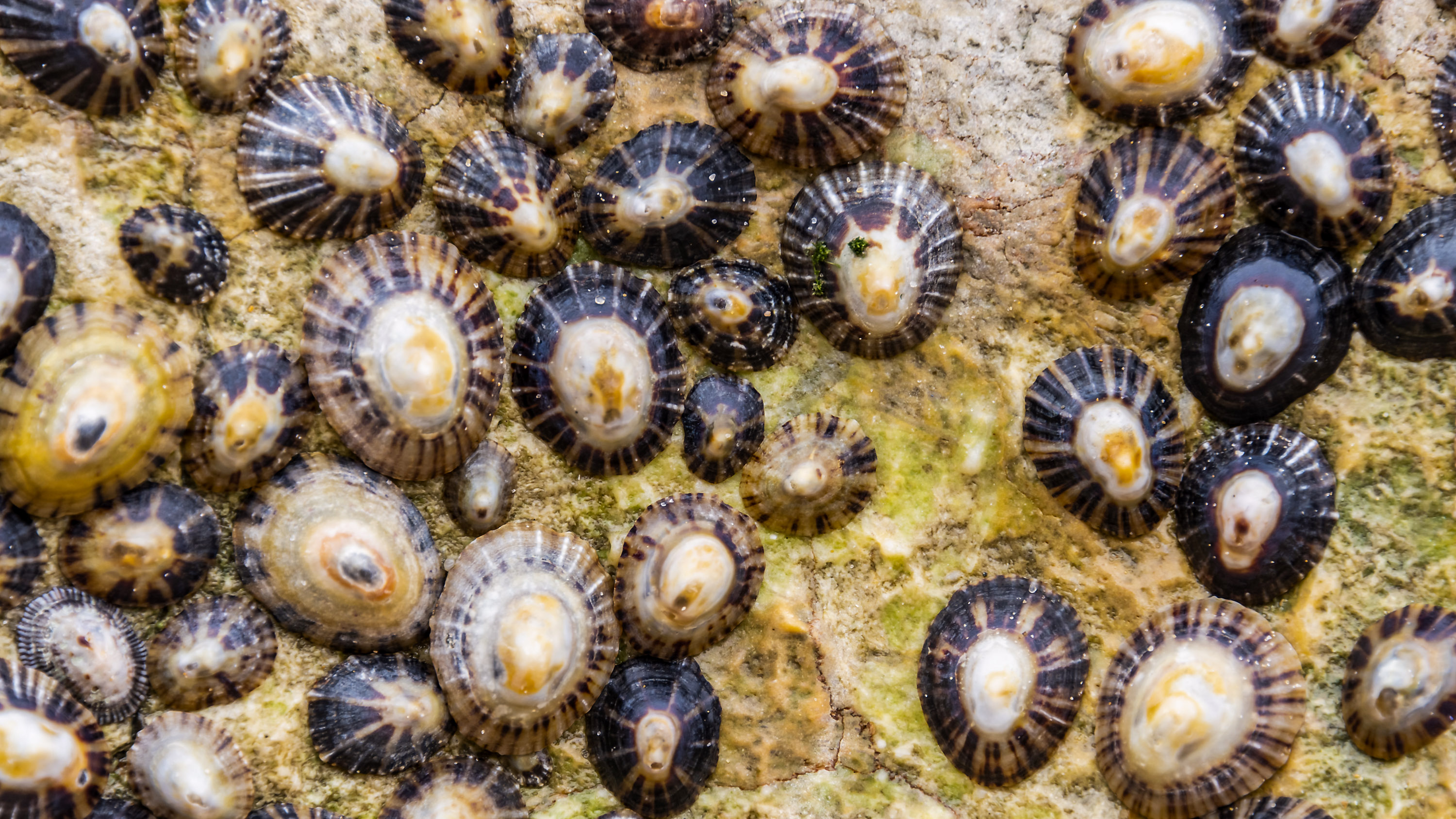The quest to re-create nature’s strongest material
Material inspired by limpet teeth could perform as well as the toughest manmade materials, or better.

For a long time, spider silk held the top spot as the strongest biological material on the planet, inspiring researchers and startups worldwide to manufacture an artificial version. But not so long ago, spiders were pushed off their silky pedestal by the common limpet, a small marine snail dotting the shores of Western Europe.
When limpets graze on algae, they scrape trails in the rocks with their radula, a tongue-like feature lined with small teeth. The trails hint at the strength of those teeth, but it wasn’t until 2015 that science put a number to it, measuring their tensile strength—the most stress a material can bear without breaking—at about five gigapascals, the highest among all natural materials.
The extraordinary mechanical properties of limpet teeth come from their composite structure: a flexible scaffold made of chitin (a common substance found in insects, crustaceans, and other organisms), reinforced with nanocrystals of a form of iron oxide called goethite.
Exploiting the strength of such a material could offer solutions to some engineering challenges. “There are a lot of applications of technology that are limited by the strength and toughness of materials,” says Nicola Pugno, a researcher at the University of Trento in Italy, who was involved in the 2015 study.
Weaker and more fragile materials limit the lifetime of objects, and they can also prevent us from building new things for more extreme applications “because at a given point, we’ll reach the failure of the material,” says Pugno.
While the appeal of replicating a particularly strong natural material is clear, figuring out how to do it is less so. “First you have to re-create these very fine structures in the lab, and then you have to find ways of production that are close to industrial manufacturing,” explains Zunfeng Liu, a researcher working on artificial spider silk at Nankai University in Tianjin, China.
In 2022, researchers at the University of Portsmouth in the UK created the first artificial limpet teeth using a curious approach: they manufactured a chitin scaffold via electrospinning, a method of producing small fibers from a solution using electricity, and then used cell cultures derived from the limpet radula to add the iron oxide crystals. “I’ll be honest—I did not expect this to work as well as it has, because it’s just so out there,” says Robin Rumney, lead author of the study.
Rumney and his colleagues are currently working on refining and scaling up production of the artificial limpet teeth with hopes of building body armor. If they succeed, limpet-inspired armor could be a stronger and more sustainable alternative to present-day bulletproof vests made of Kevlar, a material that requires a toxic manufacturing process and is difficult to recycle. Rumney also hopes to one day produce sustainable plastic substitutes, making use of the tons of chitin the fishing industry discards as waste.
For now, Rumney is just excited to analyze a recent gift from the British Antarctic Survey: a box of a different species of limpets from Antarctica with golden-colored, metallic teeth. Normally, generating metal compounds in the lab requires extreme temperatures. That these limpets are able to do it below 2 °C is remarkable. “If we could adapt this technology of taking metal out of seawater,” Rumney says, “on the one hand we could get access to useful metals, and on the other hand to clean water.”
Fanni Daniella Szakál is a marine biologist turned science journalist based in Europe.
Deep Dive
Biotechnology and health
How scientists traced a mysterious covid case back to six toilets
When wastewater surveillance turns into a hunt for a single infected individual, the ethics get tricky.
An AI-driven “factory of drugs” claims to have hit a big milestone
Insilico is part of a wave of companies betting on AI as the "next amazing revolution" in biology
The quest to legitimize longevity medicine
Longevity clinics offer a mix of services that largely cater to the wealthy. Now there’s a push to establish their work as a credible medical field.
There is a new most expensive drug in the world. Price tag: $4.25 million
But will the latest gene therapy suffer the curse of the costliest drug?
Stay connected
Get the latest updates from
MIT Technology Review
Discover special offers, top stories, upcoming events, and more.